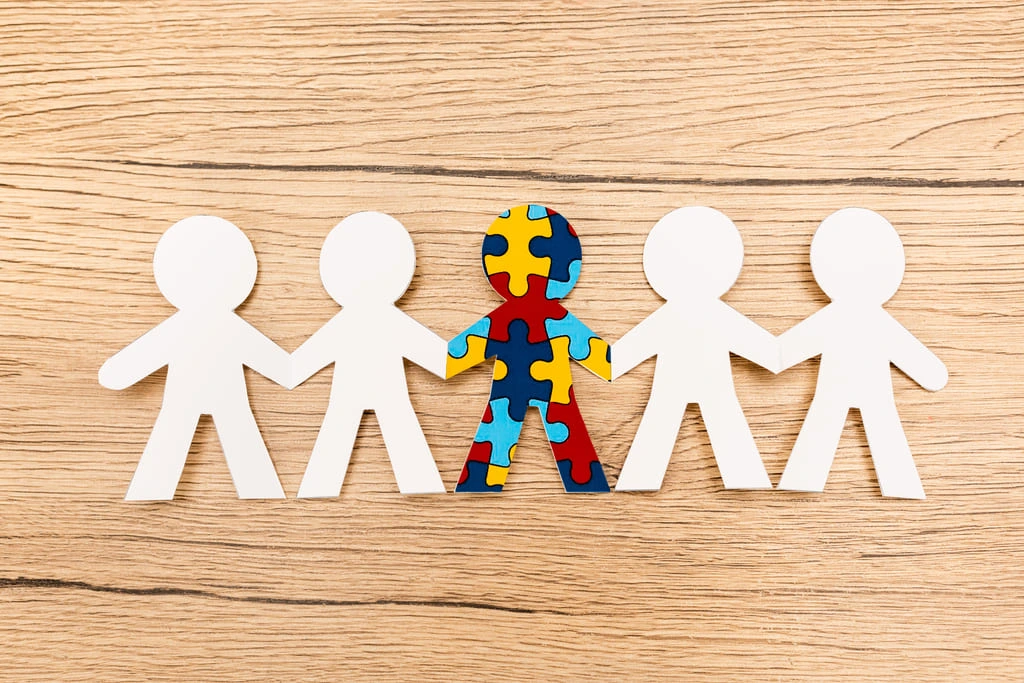What is Autism Meltdown?
When an autistic person experiences an overwhelming situation, the probability of having an intense response is very high. Autism meltdowns derive from that very overwhelming event, and the individual may express themselves verbally through shouting and crying and physically by kicking or biting. In many situations, autistic meltdowns can manifest in both ways.
A meltdown differs from temper tantrums and should not be perceived as negative behaviour. Meltdowns are unique responses, often stemming from sensory overload or other challenges, and understanding and support are crucial in promoting a compassionate and inclusive perspective. In a meltdown, autistic individuals may refuse to interact, withdraw from challenging situations or avoid them entirely.
Signs of Autism Meltdown
Autism meltdowns are intense emotional responses that individuals may experience when they feel overwhelmed, overstimulated, or unable to cope with a situation. They can be more easily managed once identified. The meltdowns are not tantrums or deliberate misbehaviour but are instead a result of sensory and emotional regulation challenges that can be particularly challenging for people on the autism spectrum.
Identifying the signs of a forthcoming meltdown requires active involvement and support from caregivers, educators, and peers to provide appropriate support and create environments that help autistic children and autistic people manage their stressors effectively.
Signs of Autism Meltdown:
- Increased Agitation
- Withdrawal
- Intense Emotional Reactions
- Sensory Sensitivities
- Difficulty Communicating
- Repetitive Behaviors
- Loss of Speech or Social Skills
- Physical Symptoms

What Triggers Autism Meltdowns?
The triggers that lead to autism meltdowns are complex, as each individual living with Autism Spectrum Disorder may respond differently to various stimuli and situations. Autism meltdowns are intense and often overwhelming emotional reactions that can occur when an individual faces challenges. Sensory sensitivities, such as hypersensitivity to loud noises, bright lights, or touch, can significantly trigger meltdowns. Additionally, difficulties in expressing needs and emotions, combined with a heightened sensitivity to changes in routine, can contribute to meltdowns.
Common Triggers for Autism Meltdowns
Navigating the world with autism can present unique challenges, and for individuals on the spectrum, meltdowns are an aspect that often accompanies this journey. Autism meltdowns are intense emotional responses that may manifest as a result of various potential triggers, and they can significantly impact both autistic persons and those in their company. The experience of an autism meltdown is complex, involving a range of heightened sensory sensitivities, difficulties with communication and social interaction, and an interplay between the individual’s internal emotional state and external environmental factors.
At Leaf Complex Care, we believe that when autism meltdowns occur, there are many ways for us to understand the broader context to foster empathy and support and create environments that accommodate the diverse needs of autistic children and adults.
Sensory Overload
Sensory overload is a prevalent trigger for an autism meltdown, particularly among autistic individuals who experience heightened sensitivities to stimuli in their environment. For an autistic person, the sensory input from sights, sounds, smells, lights and textures can be overwhelming. When confronted with an excessive sensory load, autistic people may find it challenging to process and regulate their reactions, resulting in autistic meltdowns as the individual temporarily loses control. A child’s behaviour during such moments can indicate feeling completely overwhelmed by the sensory overload, as they may exhibit signs of distress, repetitive questioning, frustration, or withdrawal.
Identifying triggers related to sensory overload makes the journey more manageable for caregivers, educators, and support workers to create environments that are more accommodating and reduce the likelihood of triggering autistic meltdowns.
Communication Challenges
Communication challenges often serve as a significant trigger for autism meltdowns, pointing out the challenges in the relationship between language, expression, and emotional regulation. For many people, verbal and non-verbal communication may pose substantial hurdles, leading to frustration, anxiety, and a sense of isolation. The struggle to convey needs and emotions or navigate social interactions can intensify stress, culminating in a meltdown. These challenges might stem from difficulties understanding or interpreting social cues, a limited ability to express oneself effectively, or sensory overload triggered by communication.
Environmental Factors
Bright lights, loud noises, unfamiliar textures, and crowded spaces can overwhelm sensory processing, leading to sensory overload. The inability to filter and regulate incoming sensory information can provoke anxiety, stress, and an intense emotional response, ultimately culminating in a meltdown. Creating sensory-friendly environments that minimise potential triggers and fostering awareness and understanding in various settings is essential for supporting autistic people and encouraging the impact of environmental factors on their well-being.
Strategies for Preventing Autism Meltdowns
Early autism intervention can help identify meltdown signs in a timely manner, which can positively impact the individual’s overall well-being, socialisation, and cognitive skills. Preventing and managing autism meltdowns requires a combination of understanding the triggers and implementing effective calming strategies. Recognising signs of an impending autistic meltdown, such as increased anxiety, restlessness, or heightened sensitivity to stimuli, can impact the overall well-being of the individual and foster positive outcomes.
Utilising calming music or noise-cancelling headphones can help create a soothing environment, reducing the impact of external triggers that may contribute to the individual’s overwhelming feelings.


Implementing Positive Behaviour Support (PBS) is a key strategy in preventing autism meltdowns. PBS focuses on identifying and addressing the root causes of challenging behaviours, aiming to create a supportive environment that promotes positive actions. By understanding the specific triggers of an autistic meltdown, our support workers and clinicians proactively implement strategies to modify the environment or routine, reducing stressors and preventing potential meltdowns.
Positive reinforcement and reward systems are integral components of PBS, as they encourage and acknowledge desired behaviours, fostering a sense of accomplishment. This approach emphasises collaboration between caregivers, educators, and the individual, working together to establish clear expectations and providing the necessary support to meet their needs. Through consistency, continuous support and Positive Behaviour Support, autistic individuals can develop coping mechanisms and adaptive skills, ultimately reducing the occurrence of meltdowns and promoting a more positive and inclusive environment.
Weighted blankets are another valuable tool to help prevent meltdowns. The deep pressure provided by the weighted blanket can have a calming effect, helping the child or adult regulate their sensory input and promoting a sense of security. Encouraging the individual to take deep breaths during moments of distress is an essential calming strategy. Teaching deep breathing techniques can empower people to self-regulate and manage their anxiety more effectively. Additionally, having a designated quiet place where the individual can retreat when feeling overwhelmed allows them to take a break from potential stressors, providing a safe space to regain composure. By incorporating these strategies into their daily routines, children and adults can navigate the challenges of autism with increased resilience and understanding.
Autism Meltdown vs Autism Burnout
Autism meltdowns and autism burnouts are distinct experiences, each characterised by unique manifestations of stress and sensory overload. An autism meltdown is often marked by an intense emotional response to overwhelming triggers, resulting in a loss of behavioural control. It can manifest as aggressive behaviour, both physically and verbally expressed, as the individual struggles to cope with heightened stress levels. Physical signs such as increased heart rate, sweating, and rapid breathing may be part of the meltdown. In such instances, providing sensory tools like stress balls or creating a calming environment can help mitigate the impact of sensory overload and facilitate a smoother transition back to a regulated state.
On the other hand, autism burnout is characterised by prolonged exposure to stressors that can lead to mental and physical exhaustion. Individuals experiencing burnout may exhibit signs of withdrawal, fatigue, and heightened sensitivity to sensory input. Unlike meltdowns, burnouts are not necessarily triggered by a specific event but result from cumulative stress over time. Once the signs of burnout are identified, caregivers are able to provide a supportive and understanding environment to help the individual navigate through this challenging phase.
Autism Meltdown vs Autism Shutdown
Here, we have highlighted the key differences between autism meltdowns and shutdowns.
Autism Meltdown:
Expression of Emotion: Meltdowns involve an outward expression of intense emotions, such as anger, frustration, or panic.
Behavioural Outbursts: During a meltdown, individuals may exhibit behaviours like screaming, crying, or physical agitation.
Triggers: Meltdowns are often triggered by sensory overload, changes in routine, or heightened anxiety.
Loss of Emotional Regulation: Individuals may struggle to regulate their emotions during a meltdown.
Need for External Support: Caregivers and those in the immediate environment can assist in helping the individual manage and recover from the meltdown.
Autism Shutdown:
Withdrawal and Disengagement: Shutdowns involve withdrawing or retreating from the external world.
Limited Communication: Individuals experiencing a shutdown may become non-communicative and unresponsive.
Coping Mechanism: Shutdowns serve as a coping mechanism, creating a protective emotional and sensory barrier.
Internalisation of Stressors: Rather than expressing intense emotions, individuals internalise stressors by disconnecting from their surroundings.
Respect for Personal Space: Recognising the need for personal space and creating a calming environment is essential in supporting individuals during a shutdown.
Reducing Autism Meltdowns with Person-centred Care and Support from Leaf Complex Care
At Leaf Complex Care, we understand the unique challenges autistic individuals and their families face, especially during meltdowns. Our person-centred approach is designed to reduce autism meltdowns by tailoring care and support to each individual’s specific needs and preferences. We prioritise building trusting and respectful relationships with the people we serve, recognising the importance of understanding communication styles, sensory sensitivities, and personal preferences.
Leaf Complex Care’s care team is committed to providing comprehensive support, emphasising collaboration with individuals with autism, their families, and other professionals involved in their care to create a holistic and customised plan. By focusing on strengths and supporting individuals to express their needs, we aim to enhance their overall well-being and minimise the triggers that may lead to meltdowns.
Leaf Complex Care operates in various locations, including Bristol, Slough, Birmingham, and Somerset, ensuring accessibility and convenience for families seeking our specialised services. By choosing Leaf, families can trust that their loved ones will receive compassionate and individualised care that promotes a sense of belonging and understanding.
If you’re looking for a partner to provide exceptional person-centred care for autistic individuals, contact us today! With us, you can learn more about how we can positively impact the lives of individuals on the autism spectrum.







